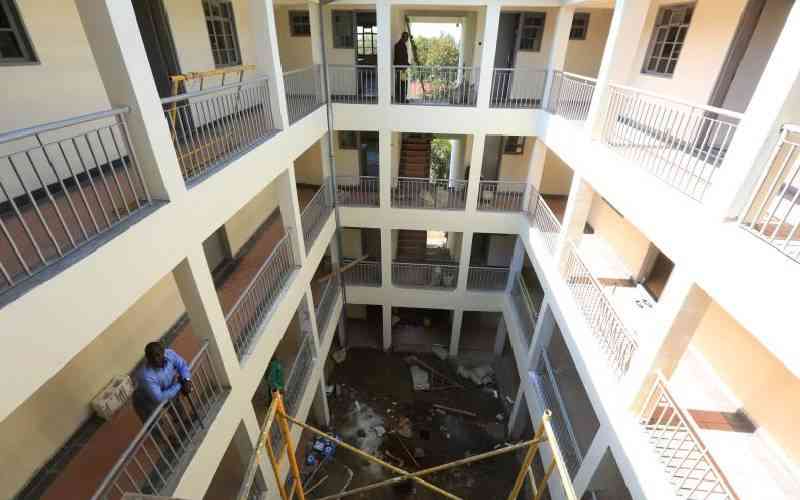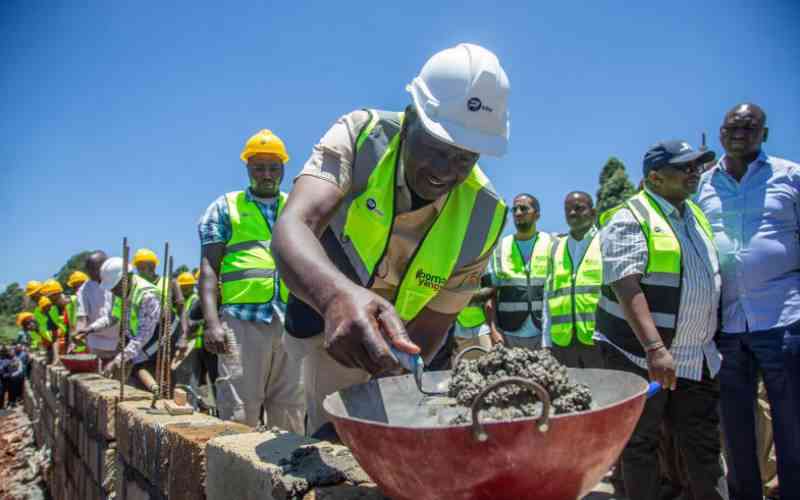By JACKSON OKOTH
KENYA: The season of declining cement prices is fast coming to an end. This follows a decision by the ministry of Mining to impose a levy on cement manufacturers.
Consequently, the price of a 50kg bag of cement is expected to go up by at least Sh10 beginning next week as the 1.5 per cent per tonne levy charged on manufacturers of cement, which translates to Sh140 per bag, takes effect.
“This new levy is a result of a negotiated settlement between the Government and cement makers for purposes of creating a level playing field between those who import finished products and those who have clinker,” said Pradeep Paurana, Chief Executive Officer, Athi River Mining (ARM).
The new levy for the cement industry is happening at a time when prices have been on a decline for months.
“Prices have been falling mainly due to oversupply in the market due to excess capacity in the industry,” said Paurana. The list of recent entries in the industry includes National Cement, Mombasa Cement and Savannah Cement.
Raw material costs
Latest data from Kenya National Bureau of Statistics (KNBS) indicates that the quantity of cement produced went up from 414,807 metric tonnes in September 2013 to 425,058 metric tonnes in October 2013. This is against consumption of cement, which increased from 342,537 metric tonnes, recorded in September 2013 to 344,614 metric tonnes in October 2013.
While the entry of more players into the cement industry has pushed down prices, this latest levy is likely to reverse the trend. Nigerian tycoon, Aliko Dangote is reported to be angling to set up a cement plant in Kenya, a move that is expected to ignite a vicious battle in the sector.
Manufacturers are worried about Kenya remaining one of the most uncompetitive investment destinations due to the high cost of doing business. Industry reports show that entry of more players in the cement industry is likely to provoke intense price competition. Cheap imports particularly from energy subsidised economies, will also be a source of price pressure in the market.
Regionally, the earmarked infrastructure projects such as the Lapsset project linking South Sudan to the Lamu port and the recent oil and mineral explorations in Kenya and Uganda, is expected to drive up demand.
Cement prices have been dropping over the past three years despite a rise in raw material costs – mainly coal, electricity and fuel — which account for nearly half of cement makers’ production costs.
 The Standard Group Plc is a
multi-media organization with investments in media platforms spanning newspaper
print operations, television, radio broadcasting, digital and online services. The
Standard Group is recognized as a leading multi-media house in Kenya with a key
influence in matters of national and international interest.
The Standard Group Plc is a
multi-media organization with investments in media platforms spanning newspaper
print operations, television, radio broadcasting, digital and online services. The
Standard Group is recognized as a leading multi-media house in Kenya with a key
influence in matters of national and international interest.
 The Standard Group Plc is a
multi-media organization with investments in media platforms spanning newspaper
print operations, television, radio broadcasting, digital and online services. The
Standard Group is recognized as a leading multi-media house in Kenya with a key
influence in matters of national and international interest.
The Standard Group Plc is a
multi-media organization with investments in media platforms spanning newspaper
print operations, television, radio broadcasting, digital and online services. The
Standard Group is recognized as a leading multi-media house in Kenya with a key
influence in matters of national and international interest.









